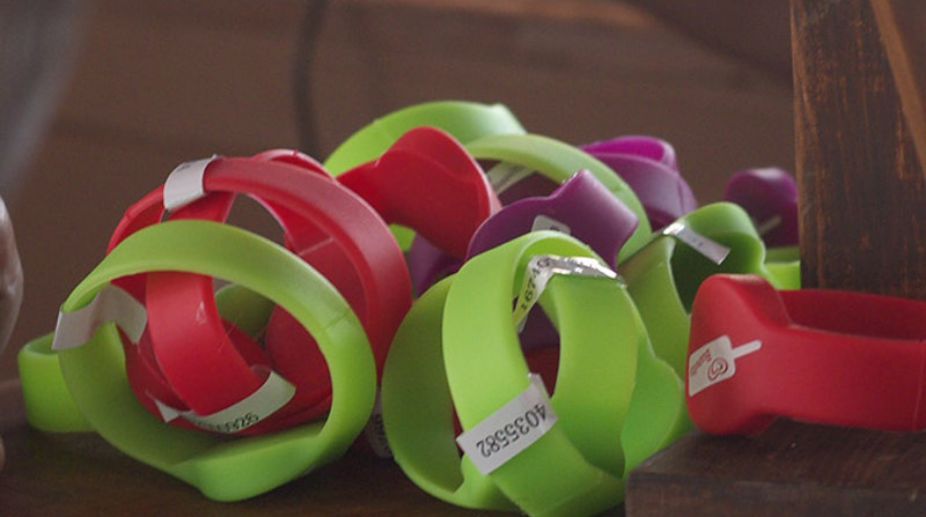In a first, scientists have found a simple and affordable method to 3D print a flexible and wearable ‘battery’.
The technique developed by researchers from Brunel University in the UK opens the way for novel designs for super-efficient, wearable power banks for phones, electric cars, medical implants like pacemakers and more.
The printer squirts stacks of silicone, glue and gel electrolyte pastes like a layer cake, to make what looks like a clear festival wristband.
A supercapacitor sandwiched inside stores energy like a battery, but on its surface and without chemical reactions.
“This is the first time a flexible supercapacitor including all its components has been produced by 3D printing,” said Milad Areir from Brunel’s Cleaner Electronics Research Group.
“The most popular way to produce them is screen printing, but with that you can not print the frame of the supercapacitor on silicone,” said Areir.
Researchers in many countries have found new ways to make flexible supercapacitators. However, their techniques, which include 3D laser selective melting machines are expensive and use different machines to print different parts.
“Our technique brings it all together into one process with one machine. It will definitely save time and costs on expensive materials,” said Areir.
The research, published in the journal Materials Science and Engineering, shows the power wristband can be made using cheap products from a household shop instead of sophisticated expensive metals or semiconductors.
They also stand up to stress tests without losing power, researchers said.
“This has developed a novel 3D printing method for manufacturing flexible supercapacitators, by one single continuous process using low-cost flexible silicone compatible with the electrode, current collector and electrolyte materials,” they said.











